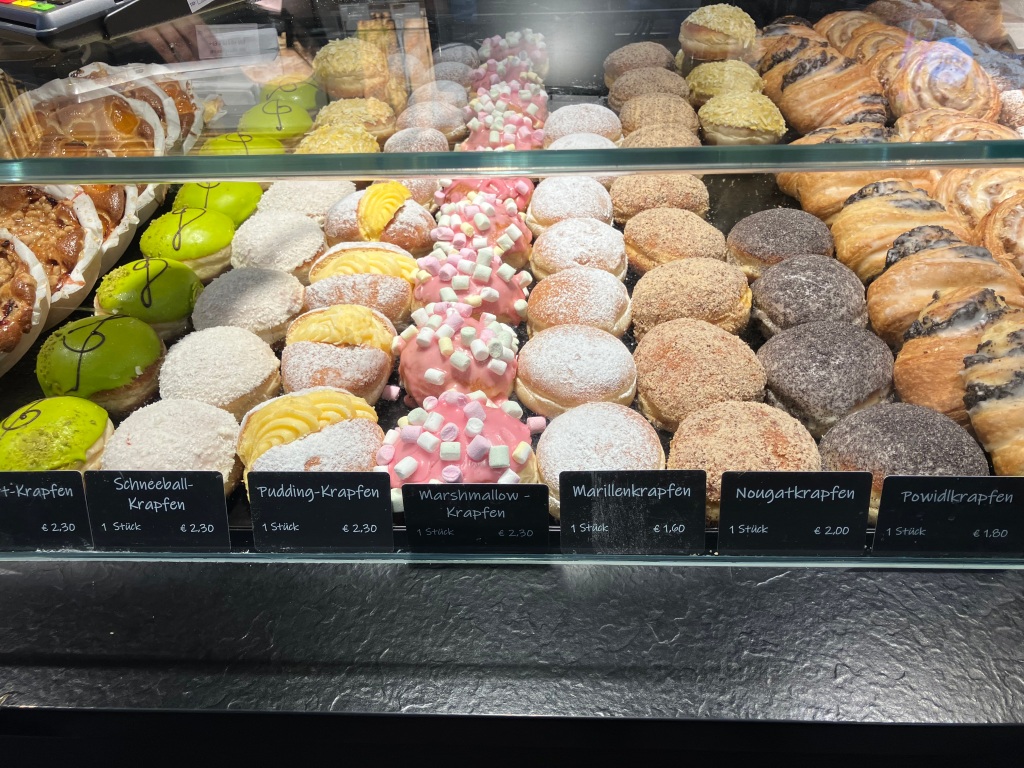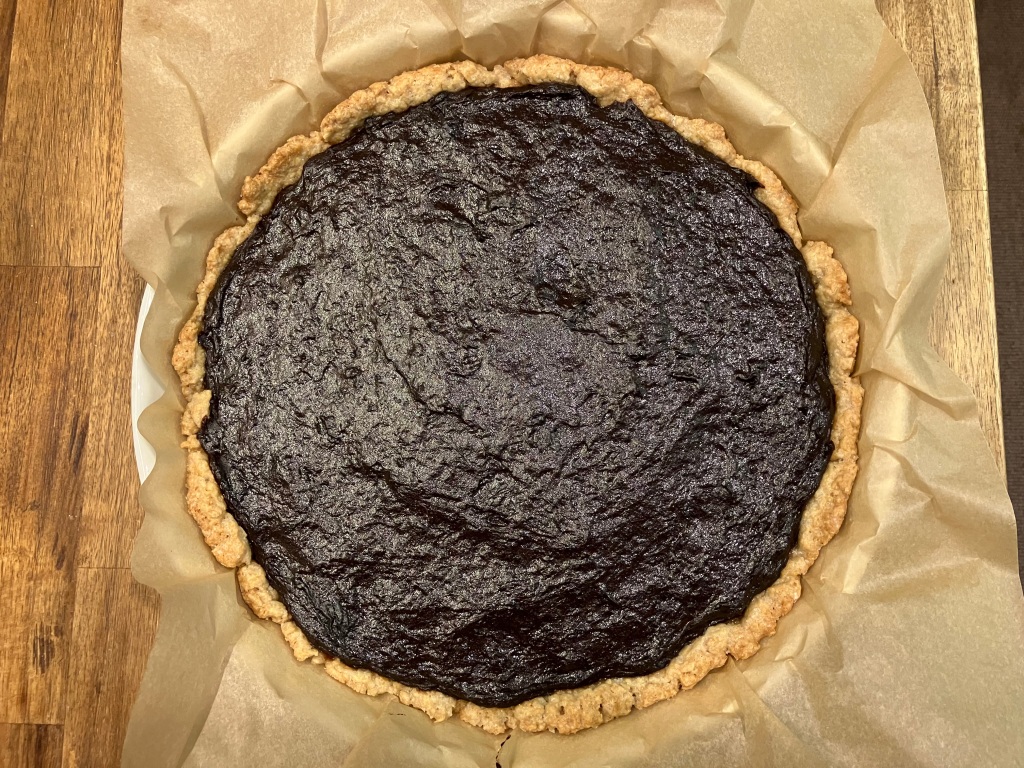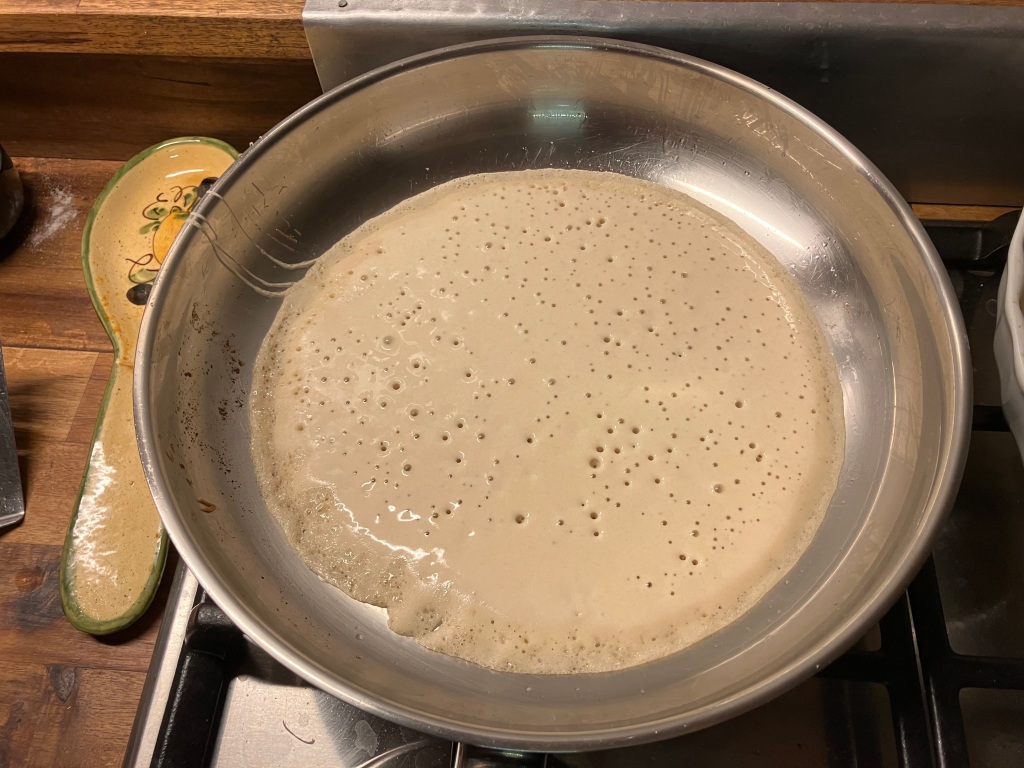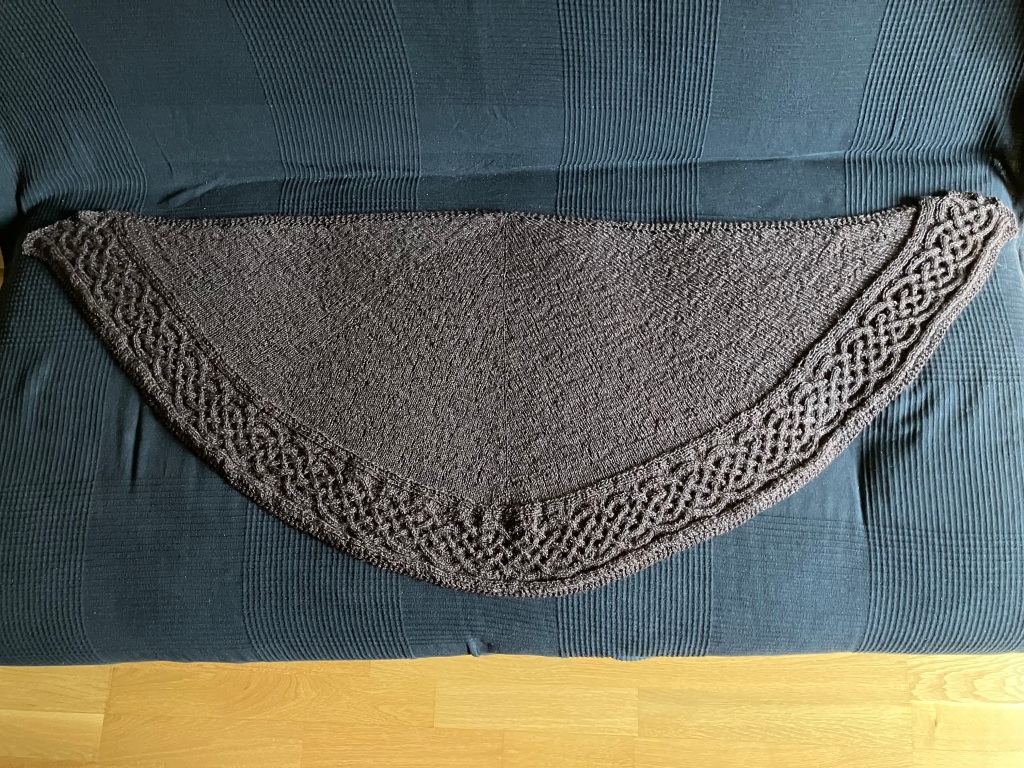Alles Krapfen…Fast
by forumholitorium

Fasching has come and gone. I believe I ate more Krapfen in the last three weeks than in the past five years. My hypothesis: an excessive workload has left my depleted brain gasping for fuel. The perfect solution: a round package of sugar and fat called a jelly-filled doughnut. Until last Friday, I had made do with apricot jam-filled Krapfen from the Hofer supermarket chain, which were actually very good. Baking Krapfen is a big business in Vienna. Every year, Gault Millau ranks the best Krapfen in town. Readers may remember that last year it was Der Mann. This year, Groissböck was voted number one, so KA and I headed to a Groissbäck cafe to see if we agreed.

Cafe Groissböck offered two types of Krapfen, one with an apricot filling (the gold standard for Austrian Krapfen and the type that is ranked) and one with a vanilla cream filling. KA went for traditional apricot while I opted for vanilla. We both found the dough light and airy, much more so than the Hofer doughnuts. I would have preferred more cake around the filling. Instead, there was hardly anything to chew but pockets of air. What disappointed me even more was the sickly artificial vanilla flavor and the overuse of sugar. A cream filling should have a mouthfeel of fat and not be cloyingly sweet. I was stunned at how mediocre the doughnut was. Having chosen a jam filling, KA found his was OK but preferred the Hofer doughnut for similar reasons (“mehr zum Beißen“). On our way home, we passed Der Mann, which had dropped to third place. Last year their Powidlkrapfen were good enough that I still thought of them from time to time, so I decided to get one to eat at home. Filled with Powidl, or plum jam, and topped with finely ground poppy seeds (on the far right in the picture above), this Krapfen did not disappoint. Der Mann should have won again, and I don’t say that simply because I love plums. This love leads me to my next seasonal baking project: pruimenvlaai.

There is a new cookbook in my life, Dark Rye and Honey Cake by Regula Ysewijn. It explores the baking traditions of Belgium, the Netherlands, and French Flanders (the Flemish part of northern France). I had to wait until Ash Wednesday to try out the intriguing recipe for prune pie, or pruimenvlaai. This pie is eaten in Antwerp as Carnival ends and Lent starts. Prunes are soaked in water overnight, cooked with cinnamon until soft, puréed to a paste, then spread into a shortcrust pastry shell. There should be a lattice on top, but the dough had a minor disagreement with the rolling pin, so my pie is not quite traditional. I suspect it was because I had added a little rye flour to the spelt flour substituted for the wheat flour called for in the recipe. Nevertheless, the pie was good. Remarkably creamy and naturally sweet, the prune filling is guaranteed to please lovers of Powidl and plums.

Prune pie is the third recipe I’ve tried from the cookbook. The first was for a rye and raisin bread, which has become a favorite. The second was the recipe for crêpes called Doubles de Binches. Binches is a town in Wallonia, the French part of Belgium, known for its Carnival traditions that include a parade where the Gilles, men dressed in towering hats of ostrich feathers, throw oranges at the crowd. This savory crêpe recipe does not call for oranges, just a mixture of whole wheat and buckwheat flours and the usual suspects. Since Flemish boulette cheese is not available in Vienna, I spread goat cheese on mine. All this good food has kept my arms, hands, and fingers moving industriously throughout the Carnival period. I am happy to unveil my latest knitted creation: a fingering weight shawl with a border of intricate Celtic knotwork. It sits wonderfully on my shoulders and will keep me warm until spring arrives.

May you discover a seasonal food from another cultural tradition!

Your shawl is beautiful!
Thanks!